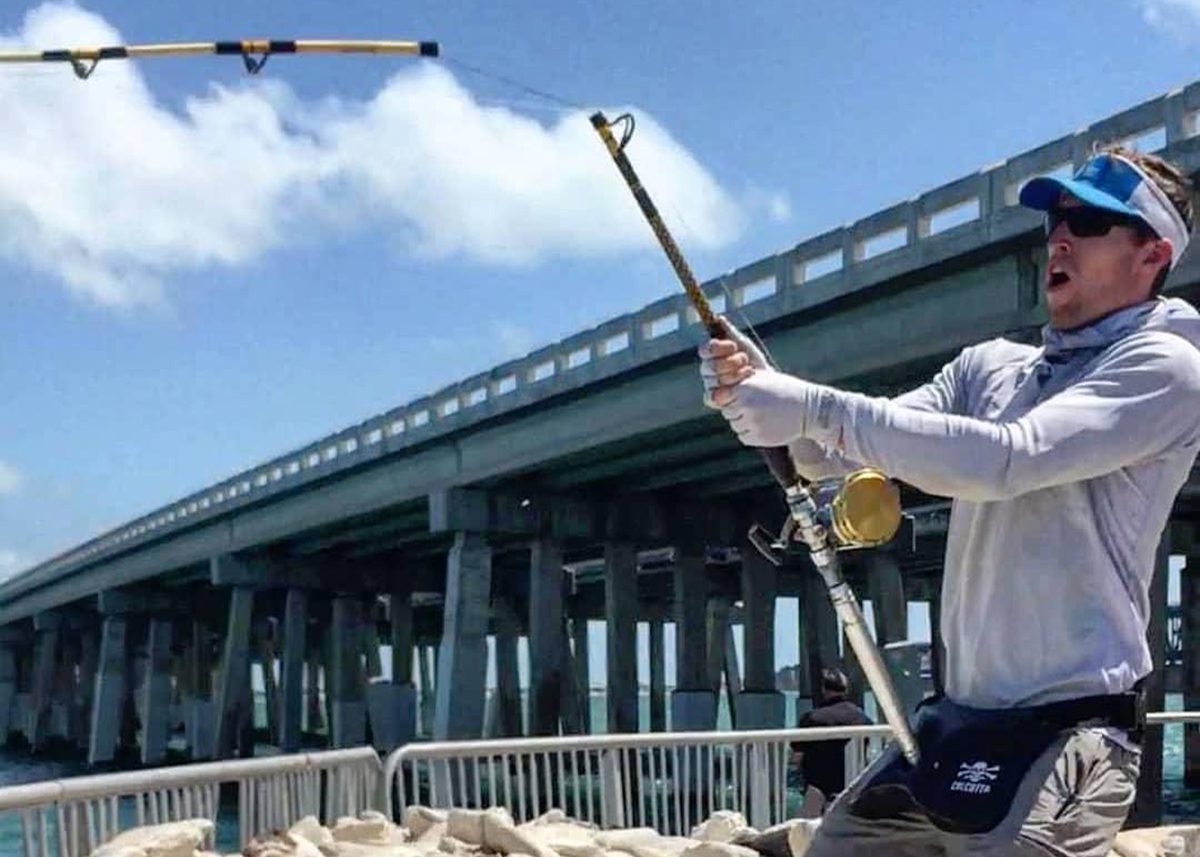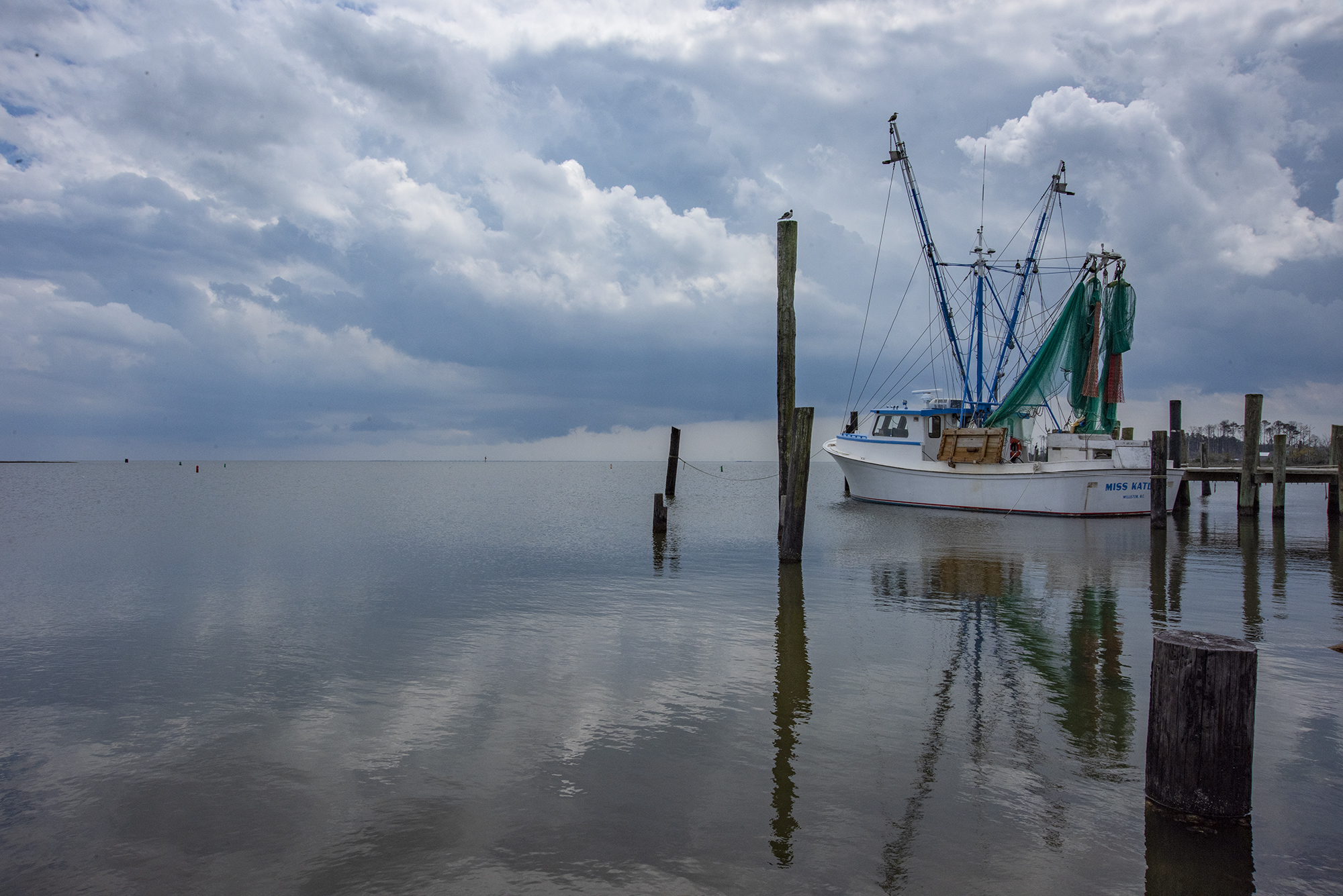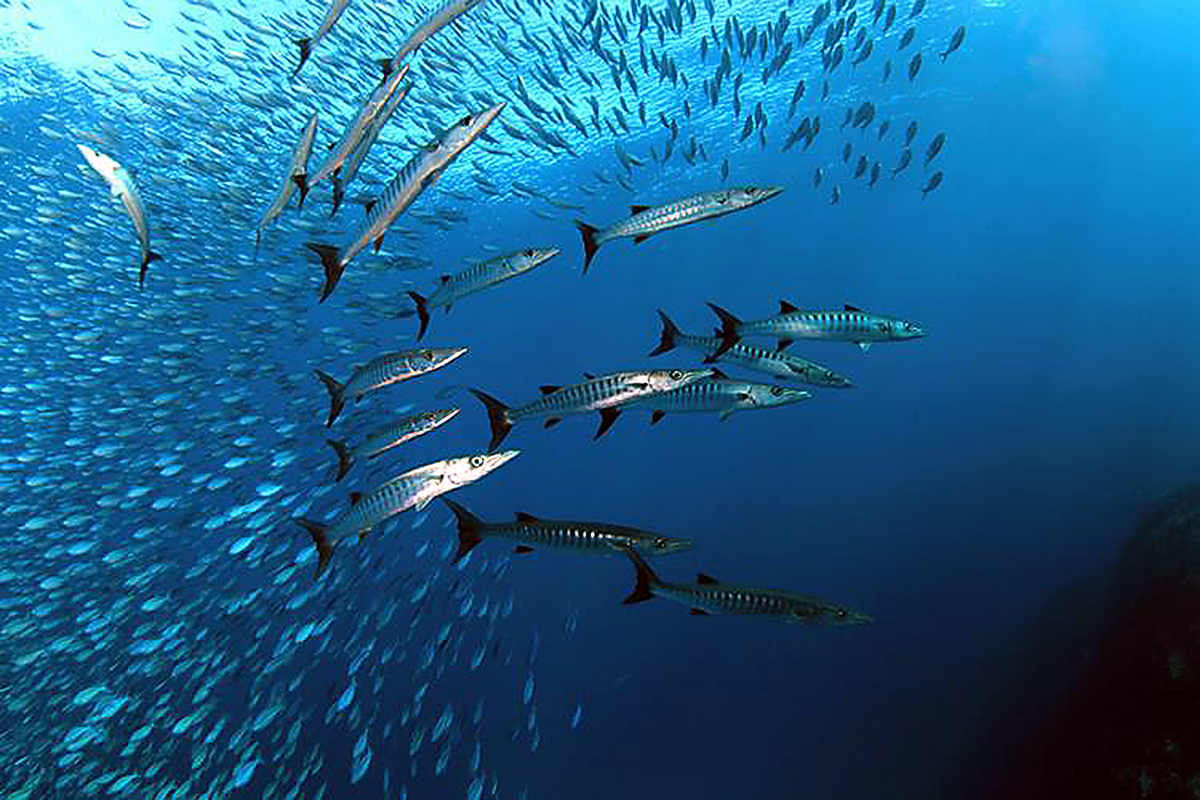
The Atlantic wahoo is prized by recreational fishermen, with recreational landings totaling more than 2.4 million pounds in 2019, but it’s also sometimes mistaken for another well-known gamefish, and there are a number of challenges related to management of the species.
Frequently confused with king mackerel, wahoo are found in tropical and subtropical waters around the world.
Supporter Spotlight
“They are an offshore, warm-water fish usually found alone or in small schools hanging around near drifting objects like seaweed. In the western Atlantic, you can find and catch this species from New Jersey south to Colombia, as they migrate through the Gulf Stream north in the summer and returning to the tropics in the winter,” said Tracey Bauer, fisheries biologist with North Carolina Division of Marine Fisheries.
The wahoo has a long, narrow body, a pointed snout and a continuous dorsal, or top fin. Its body is somewhat tapered like a mackerel, with a deeply forked tail, which is sign that this fish can move, and really move, as quick as any member of the tuna family.
Its body color ranges from a steel blue on top down to a paler blue coloration on their bottom. They have relatively small scales, with 25 to 30 blackish-blue vertical bars that are visible down both sides of the lateral line while alive and in the water. The bars fade quickly after the fish has perished.
In North Carolina waters, wahoo grow up to 8 feet in length. State citations are given for the landing of any wahoo weighing 40 pounds or more. The North Carolina state record is 150 pounds, which was caught off Ocracoke Island in 1994.
Atlantic wahoo grow quickly but they are most commonly caught at sizes between 3.3 to 5.4 feet in length. They don’t live very long, only about 5 or 6 years, but they can reproduce at about a year old.
Supporter Spotlight
“For males, this is when they reach 2.8 feet in length, and for females, 3.3 feet in length. Atlantic wahoo spawn multiple times throughout the spawning season. They are very productive, and may release anywhere between a half-million to 45 million eggs per year to compensate for eggs and larvae that might not survive to adulthood due primarily to predation,” Bauer said.
In North Carolina waters, wahoo will mainly feed on other fish like frigate mackerel, butterfish, porcupine fish and round herring, as well as squid, and argonauts, or paper nautilus. They quickly and aggressively pursue and overcome their prey, capturing the fish with their strong jaws and powerful tail fin. They usually compete for food with tuna, but may also feed on larger prey, using their sharp teeth to make quick work of anything they catch. But other predators that share their habitat can also feed on young wahoo.
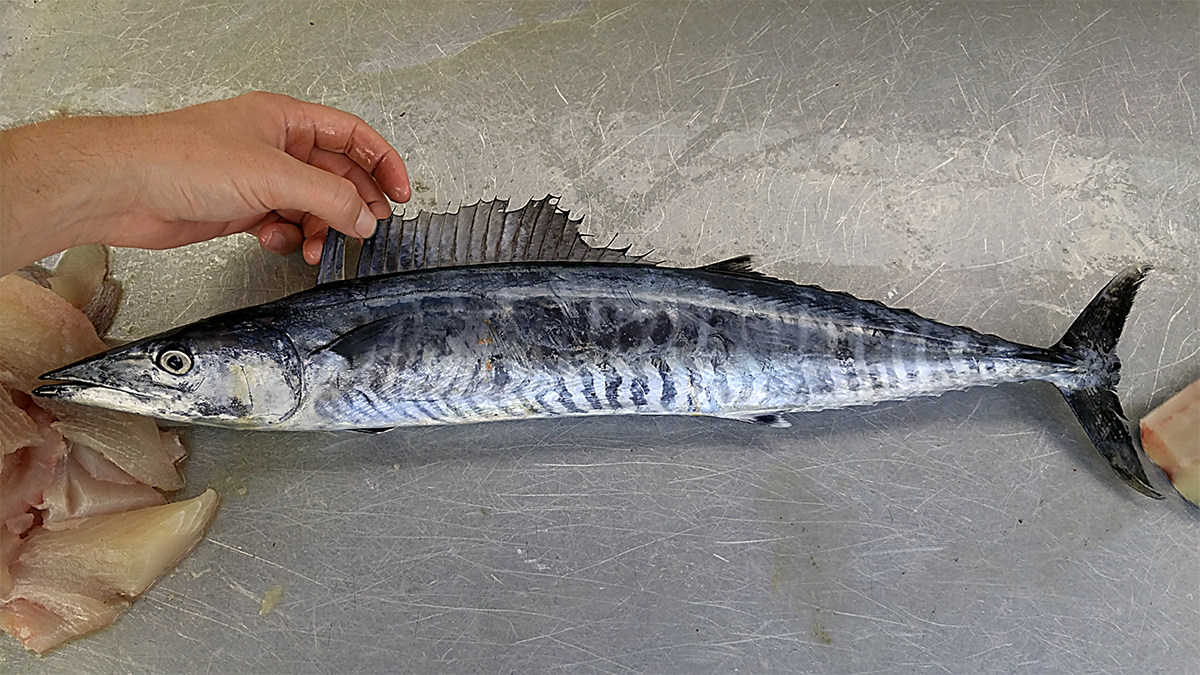
Management challenges
The National Marine Fisheries Service, also known as NOAA Fisheries, and the South Atlantic Fishery Management Council, in cooperation with the Mid-Atlantic and New England fishery management councils, manage the Atlantic wahoo fishery under the Dolphin and Wahoo Fishery of the Atlantic Fishery Management Plan.
“Managing a popular offshore fish species along the entire Atlantic Coast can be a challenge under the best of circumstances. Add an international component, lack of stock assessments and the cascading effects of new catch-level recommendations mixed with differing perceptions on the condition of the fisheries, and the challenge increases,” said Steve Poland, a marine fishery policy analyst and manager based in Morehead City.
Poland, who is executive assistant for councils with the North Carolina Department of Environmental Quality’s Division of Marine Fisheries and vice chair of the South Atlantic Fisheries Management Council, said the migratory species is prized for its colorful display as a fighting fish, “and for their delicious flavor.”
In April 2020, the South Atlantic Council’s Scientific and Statistical Committee provided new acceptable catch recommendations for wahoo. The updated recommendations were mainly prompted by revisions to recreational data collected through the Marine Recreational Information Program, or MRIP, a partnership between state marine resource agencies and NOAA Fisheries.
Changes to the program’s survey efforts have resulted in revised recreational landings estimates that are being incorporated into catch-level recommendations, not only for wahoo, but several other species managed by the council.
“Because the wahoo fishery is primarily recreational, with 96.07% of the annual catch limit for wahoo currently allocated to the recreational sector, the recreational landings estimates from MRIP are especially important for management,” said Poland. “Stock assessments are unavailable for wahoo due in part to the migratory nature of the species but also due to a lack of reliable data on the stock dynamics of this fish. In the western Atlantic, they are found from Nova Scotia to Brazil, including Bermuda, the Caribbean Sea, and the Gulf of Mexico.”
There’s no size limit for recreational catch of wahoo, but there is a bag limit of two fish per person, per day. Recreational sale of dolphin and wahoo is prohibited, “unless the seller holds the necessary commercial permits,” Poland said.
For commercial fishers, there is no limit on the numbers of wahoo that may be caught per trip, but each trip is subject to a limit of 500 pounds, which must be landed head and tail intact.
Allowable gear includes hook-and-line, manual, electric and hydraulic rods and reels, bandit gear, handlines, longlines and spearfishing, including powerhead gear. Longline fishing for dolphin and wahoo is prohibited in areas closed to the use of such gear for highly migratory pelagic species, Poland clarified.
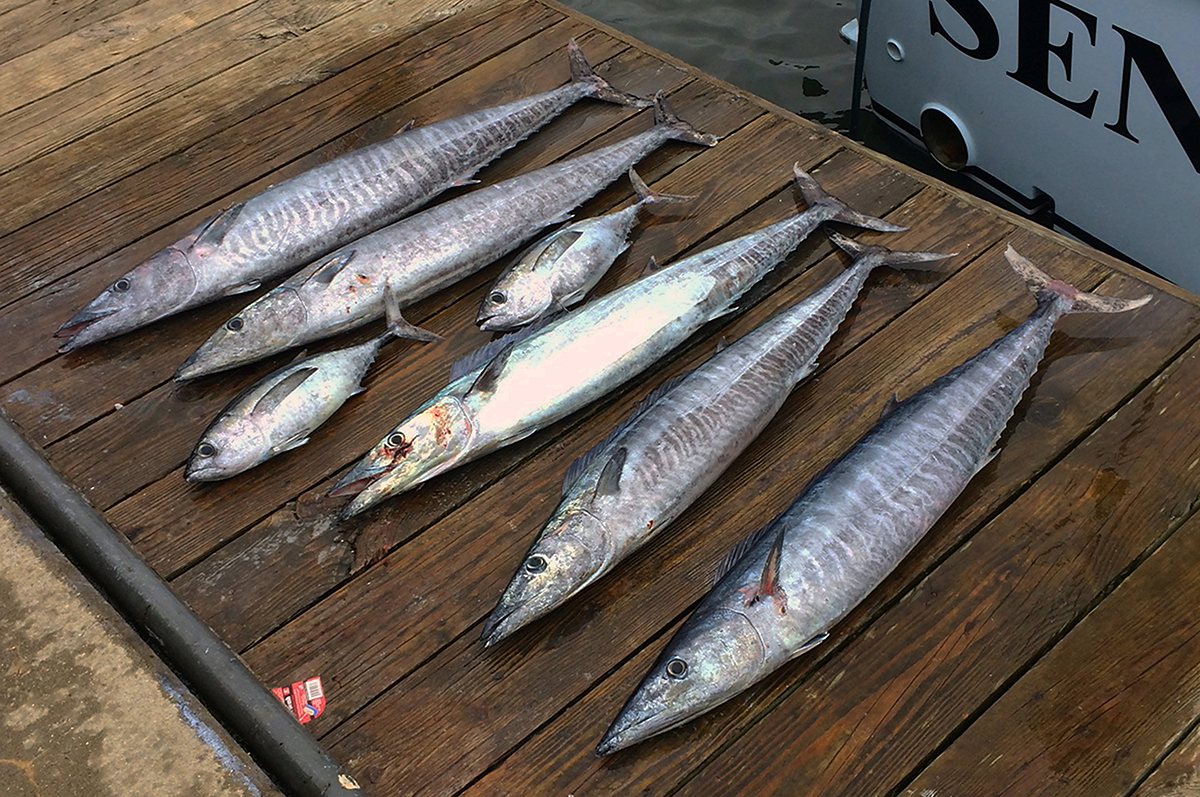
Owners of commercial vessels or charter vessels and headboats must have vessel permits and, if requested, submit reports. Dealers are also required to hold permits and, if requested, submit reports. Longline vessels must comply with sea turtle protection measures.
“For a commercially permitted vessel fishing north of 39 degrees north latitude, that does not have a federal commercial vessel permit for dolphin or wahoo, there is a trip limit of 200 pounds of dolphin and wahoo, combined. Operators of commercial vessels, charter vessels, and headboats that are required to have a federal vessel permit for dolphin and wahoo must have and display operator permits,” he said.
To apply for a vessel, dealer or operator permit, contact the Permits Office, NOAA Fisheries Southeast Regional Office, 263 13th Avenue S., St. Petersburg, FL 33701, or by phone at 727-824-5326.
According to the South Atlantic Marine Fishery Management Council website, an operator permit card issued by NOAA Fisheries’ Northeast Region is valid for the South Atlantic Dolphin/Wahoo fishery. Similarly, persons who already possess an operator permit card to participate in the South Atlantic rock shrimp fishery do not need to obtain a separate operator card.
For information on how to apply for an operator permit from NMFS Northeast Region, visit their website.





